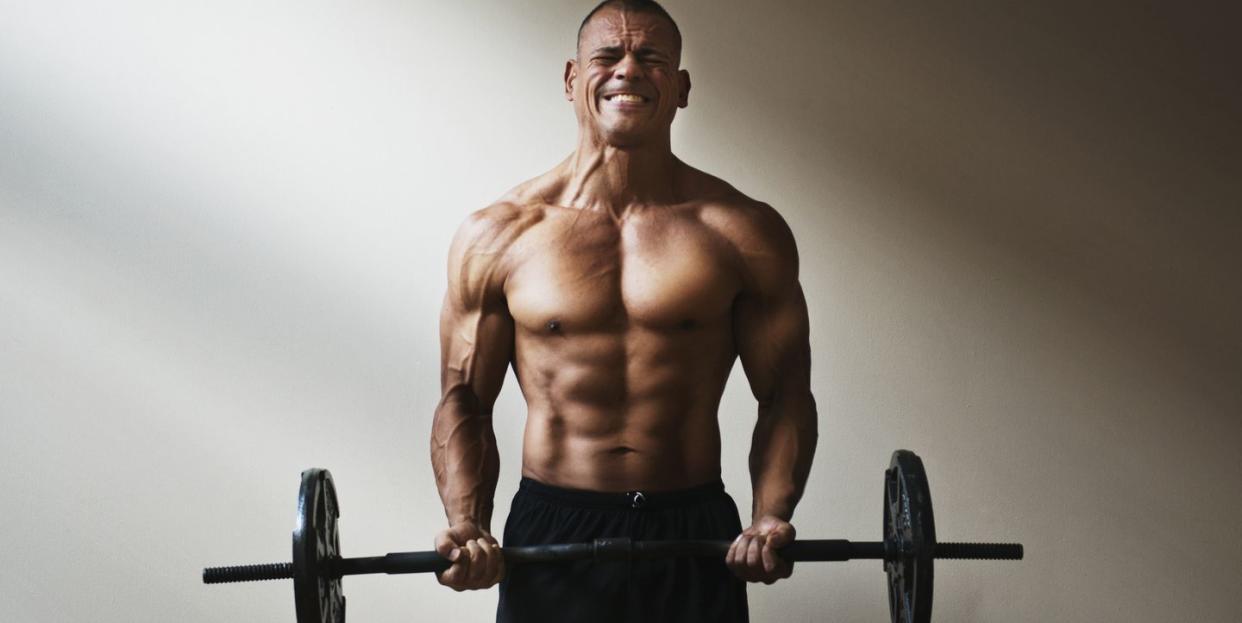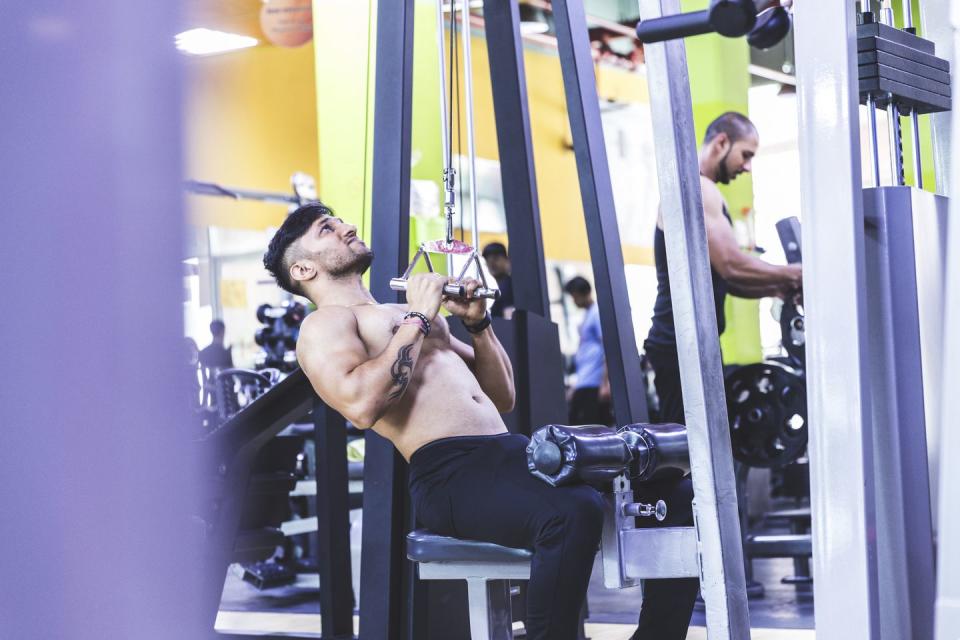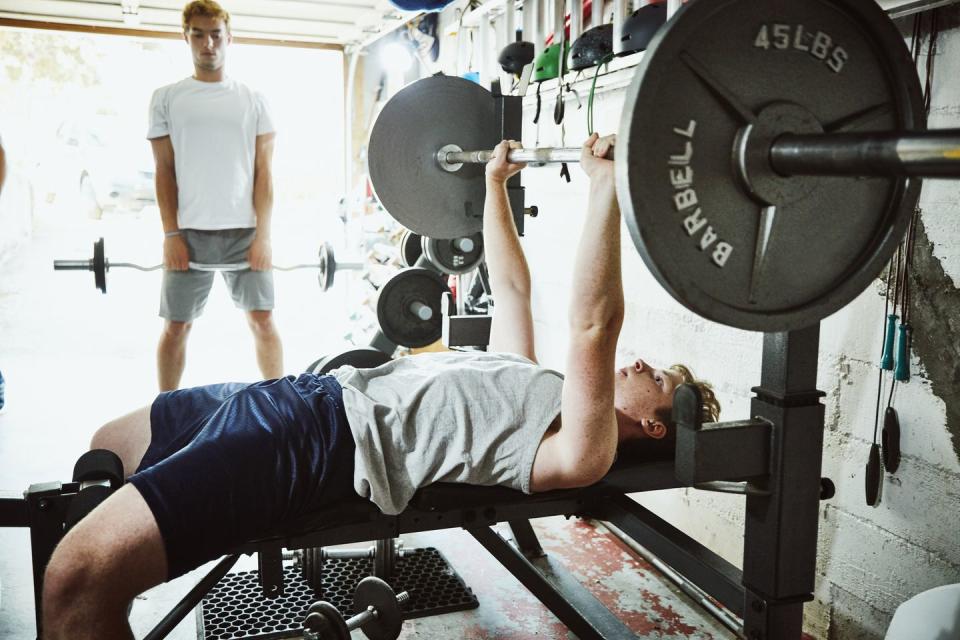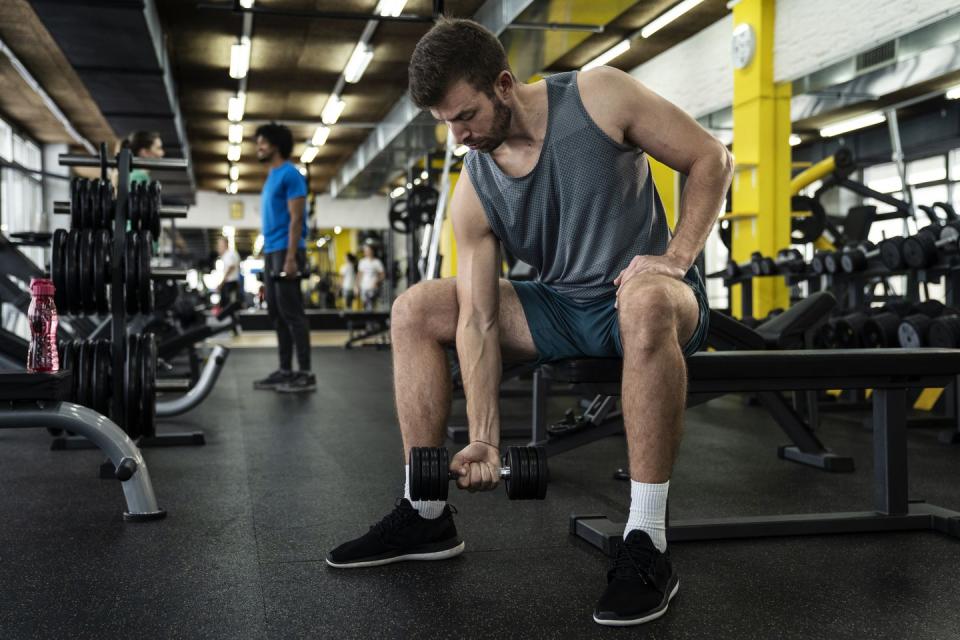How to Cheat Your Way to More Muscle

When it comes to packing on muscle, cheaters can prosper. As long as they cheat the right way.
That’s right. When you start training, it’s absolutely critical to use proper, perfect form, and to make serious muscle gains, you’ll want to use that more often than not. But if you’ve been hitting the gym for years now and have already have some solid muscular development to show for it, then the perfect cheat just might be what you need to bust through your latest training plateau.
Mastery of the basics comes first, but if your bench press max just won’t budge or you can’t seem to gain that extra-half-inch you want on your guns, smartly employing “cheat” reps just may be the route through your current gym wall. Smartly utilized cheat reps let you overload your muscles in ways that promote growth. Will the for police on Instagram crush you? Sure, but you’ll be on your way to the muscle and strength you badly want.
Why Cheat Reps, and How?
Cheat reps are all about really overloading the muscles you’re intending to train. When you do flawless reps, you’re generally isolating and focusing on the muscles you’re training, and not letting other muscles assist with the lift. Cheat reps, on the other hand, are all about letting other muscles contribute to the basic lift.

Getting other muscles involved allows you to lift more weight, which means you’re exposing the muscle you’re training to more weight, period. Granted, the target muscle (say, your biceps) is getting plenty of help from other muscle groups (say, your shoulders and back), so it’s not doing all the work. But it still has to shoulder a greater load than usual.
And the greatest benefit to cheat reps comes as you lower the weight back down to the starting point. Known as the “eccentric phase” of an exercise, this lowering process is often done mostly by the target muscle, with limited help from those other muscle groups. So your entire body may have helped you, say, do a heavy barbell biceps curl. But if you take your time lowering that heavy bar down to the start of the curl, trying to take, say, 3 seconds to lower it, your biceps bear the brunt of that load.
To truly push their limits, you’re going to need to deal with an overload to the eccentric, and the only way to get there is to cheat with weight that’s a few percent higher than your rep range max.
This Isn’t for Everyone
And you shouldn’t be doing cheater reps in every workout-or at every stage of your muscle-building journey. You have to be an experienced lifter who’s already seen serious gains, understand their body, and understands how to perform a perfect rep of the exercise you’re trying to cheat on. You’re not really cheating if you don’t know the basics of the exercise first.
Cheat Your Way to Muscle
A post shared by @coachleeboyce on Jan 17, 2019 at 12:31pm PST
Lifting starts with a mind-muscle connection, which you establish with perfect form. Once you have that perfect form covered, you can consider applying cheat principles. There are two ways to do this.
Your first option: Load up a weight that’s heavier than normal right from the beginning. You’ll need to start cheating with every rep then, probably doing fewer reps than usual. This will expose your muscles to a heavier load than usual; use this method smartly and eventually, they’ll adapt. Your other option: Use your normal weight. Do as many reps as you can, then cheat your way to a few more reps.
However you do it, don’t use it in every workout, or on every exercise-and don’t use it when you’re tired at the end of a workout. Cheat reps gain results when they’re used smartly; when they’re not, they invite injury. Consider the “Rule of 1” when employing cheater reps. Never use them for more than one exercise in a workout. Never use them more than once a week. And always use them on your first exercise of a workout; the last thing you want to do is try to cheat your way to bench press reps with more weight than you’ve ever used after your chest fibers are tired out from incline bench reps and cable flies and pushups.
The Best Cheat Exercises
Not every exercise is ideal for cheating. Here are four motions you can cheat with-and how to pull them off cheater-style.
For Powerful Biceps: Barbell Curls
Stand holding a barbell loaded with a weight that’s 10 or 15 pounds above your normal training weight. Bend your arms slightly, then hinge forward just a little bit at the waist. Mildly “rock back”; this will help the curl get started. Then finish the curl by curling the barbell up with your biceps. Slowly lower the weights to take advantage of the negative contraction.
A post shared by 조승연🇰🇷 (@c__s__y0522) on Jan 16, 2019 at 7:10am PST
Pause for a second after you’ve returned to the start position, then begin the next rep. Stringing together too many cheat reps often leads to less-than-stellar eccentric contractions (which defeats the purpose of the cheat in this exercise).
Think of doing 3 sets of 4 to 6 reps.
For a Big Back: Seated Rows
There’s a misconception that your trunk and spine must remain rigid when you’re doing a cable row. Your arms will only be able to row so much, even with good form, and your upper and lower back, in real life, often work together to help you lift things. So it’s OK to rock a little when doing seated rows.
A post shared by Frank Fata (@frank_fata1) on Jan 20, 2019 at 2:23pm PST
The key is how and when you’re rocking backwards. Set up as if performing a regular row, with your hands gripping the bar of the cable attachment, arms fully extended. Only after that do you let your torso shift forward. However, you keep your core tight as your torso shifts forward; think about maintaining a rigid spine, or even arching your back just slightly. Make sure you are pivoting from your hip, not your lower back.
Then rock backwards from the hip; use that momentum to start the row motion. Squeeze your shoulder blades, then row the weight back. Make sure you squeeze your shoulder blades before starting the row to protect your shoulders.
Aim to do 3 sets of 6 to 10 reps.
For Powerful Shoulders: Standing Overhead Press
The overhead press pattern can be carefully spiced up if you learn to involve your legs. This turns the motion into a push press, and if you use a controlled eccentric contraction, that can help grow serious shoulders.

A traditional standing overhead press has you standing with a barbell or dumbbells at your shoulders, core tight and glutes squeezed, then pressing up, focusing on moving only at the shoulder and elbow joints. To make this a push press, simply bend at the knees and hips just slightly, essentially doing a quarter squat. Explode from that position, then use the momentum to drive the weight up and overhead. Lower the weight slowly, then reset for another rep.
The key here: Make sure your core stays tight even in the push press. If it doesn’t, you could harm your lower back, or do more harm than good for your shoulders. Limit the reps to 3 sets of 3 to 5.
Exercises You Should Never Cheat
Not every exercise works well when you cheat it; in some cases, you only create a mechanism for injury. Avoid cheating on these movements.
Bench Press

You’ll see plenty of guys lifting their hips and lower back off the bench to “cheat” the weight upwards, but that’s a risky proposition. Bench-pressing without proper form can cause long-term shoulder trouble, so it’s not worth the risk.
Concentration Curls

And exercises like them. A concentration curl is a focused exercise that’s meant to isolate the biceps. Cheating and involving other muscle groups takes away the isolation qualities of the movement. Suddenly, you’re not concentrating on proper form -- or on your biceps.
Lateral Raises
The further the arm moves away from the body, the more vulnerable it becomes to injuries at the shoulder joint. In the case of lateral raises, your arm is as far from the body as it could possibly get. Adding weight to overload the muscle is a risky proposition, especially since the shoulder joint is already the vulnerable to injury.
('You Might Also Like',)

